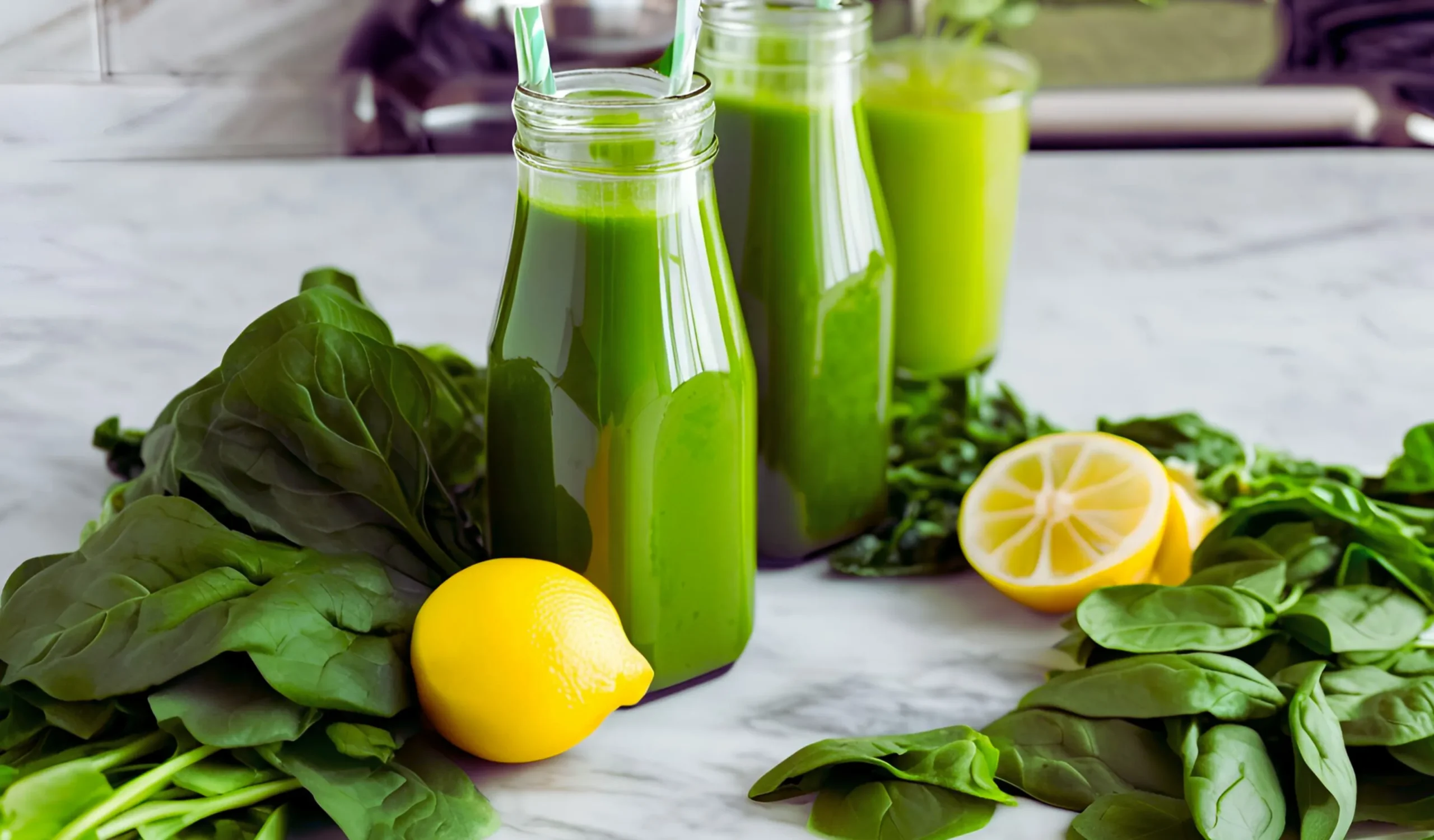Juice cleanse recipes have become increasingly popular as a way to detoxify the body, reset digestion, and boost energy levels. By relying on fresh, nutrient-packed juices made from fruits and vegetables, this cleanse helps give your digestive system a break while flooding your body with essential vitamins and minerals. In this article, we’ll uncover everything you need to know about juice cleanses, including benefits, types, preparation tips, and a detailed recipe for a one-day cleanse. Let’s get started!
Part 1: Introduction to Juice Cleanse Recipe
What is a Juice Cleanse Recipe?
A juice cleanse recipe is a carefully designed plan that replaces solid meals with nutrient-rich juices. These recipes combine fresh fruits, vegetables, and superfoods to create delicious drinks that are easy to digest and filled with vitamins. Whether you’re looking for a gentle detox or a quick energy boost, these recipes are tailored to promote overall wellness.
Juice cleanses usually last between one and five days, depending on the individual’s goals. Unlike fasting, a juice cleanse ensures your body receives nutrients while giving your digestive system a much-needed break.
Why Do People Choose Juice Cleanses?
From reducing bloating to improving skin clarity, there are plenty of reasons why people turn to juice cleanses:
- Detoxification: Juices help flush out toxins from the body.
- Weight Loss: They support short-term weight management by eliminating processed foods.
- Improved Energy: Nutrients from raw fruits and veggies provide an instant energy boost.
- Digestive Reset: Juice cleanses allow the gut to rest and recover from over-processed foods.
That said, it’s essential to listen to your body during a juice cleanse and adjust the recipes to suit your needs.
Part 2: Benefits and Drawbacks of Juice Cleanses
Benefits of Juice Cleanses
Juice cleanses come with a range of potential benefits, making them appealing to many health-conscious individuals:
- Improved Digestion and Gut Health: By replacing solid meals with juices, the digestive system gets a break, allowing it to reset and repair. Ingredients like ginger and celery promote gut health.
- Increased Intake of Vitamins and Minerals: Fresh fruits and vegetables provide a concentrated dose of essential nutrients, including vitamins A, C, and K, as well as potassium and magnesium.
- Hydration and Reduced Bloating: Juices contain high water content, helping the body stay hydrated while flushing out excess sodium and reducing bloating.
- Possible Weight Loss Benefits: While not a long-term solution, juice cleanses can help jumpstart weight loss by eliminating processed foods and focusing on natural, low-calorie drinks.
Drawbacks and Risks
While juice cleanses can be beneficial, they’re not without their downsides:
- Lack of Protein and Fiber: Since juices are stripped of fiber and lack protein, prolonged cleanses may lead to hunger, fatigue, and muscle loss.
- Potential Side Effects: Blood sugar levels may spike due to the high natural sugar content in fruits. Some individuals may experience fatigue, headaches, or irritability.
- Not Suitable for Everyone: Juice cleanses may not be ideal for pregnant or nursing women, individuals with medical conditions, or those requiring high-calorie diets for work or exercise.
Part 3: Types of Juice Cleanse Recipes
One-Day Juice Cleanse
This cleanse is perfect for beginners looking for a gentle detox. It provides hydration and a burst of vitamins while giving the digestive system a short break.
Three-Day Juice Cleanse
A three-day cleanse offers a more intensive approach, specifically designed to reset digestion and enhance energy levels. It is particularly suitable for individuals who have already experienced a one-day cleanse and are looking to explore deeper detox benefits. Moreover, this extended cleanse allows the body more time to eliminate toxins, promoting a greater sense of rejuvenation and well-being.
Five-Day or Longer Cleanses
These extended cleanses are designed for experienced users. They provide a deeper detox but require more preparation and commitment. Hydration and monitoring are essential during long cleanses.
Customized Juice Cleanses
For those with specific health goals, recipes can be easily tailored to target weight loss, increase energy levels, or support detoxification. For instance, adding ginger can aid digestion, while incorporating citrus fruits helps boost immunity. Moreover, leafy greens provide essential nutrients, and hydrating ingredients like cucumber enhance overall detox benefits. By customizing ingredients, you can create a cleanse that aligns perfectly with your wellness needs.
Part 4: How to Prepare for a Juice Cleanse
Pre-Cleanse Tips
Preparation is crucial for a successful juice cleanse. Here’s how to get started:
- Gradually Reduce Processed Foods: Begin cutting out sugary and processed items, caffeine, and alcohol a few days before starting the cleanse.
- Increase Water Intake: Stay hydrated to help your body flush out toxins.
- Focus on Lighter Meals: Stick to fruits, vegetables, and whole grains to ease the transition into liquid-only meals.
Necessary Equipment and Ingredients
- Juicer vs. Blender: A juicer removes the pulp, resulting in smooth juices, while a blender retains fiber, creating thicker drinks. Choose based on your preference.
- Common Ingredients: Kale, spinach, apples, lemons, cucumbers, ginger, beets, and carrots are staples in most juice cleanse recipes.
Part 5: Juice Cleanse Recipe (Detailed)
Ingredients for a One-Day Juice Cleanse
Morning Juice (Energizing Green Juice):
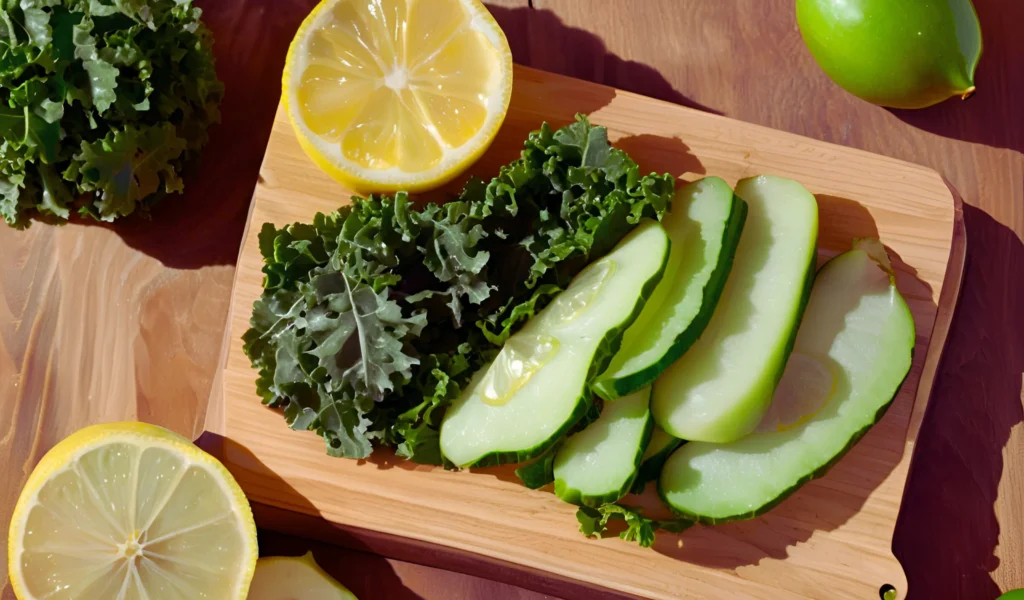
- 2 cups spinach
- 1 cup kale
- 1 green apple
- 1 cucumber
- Juice of 1 lemon
Midday Juice:
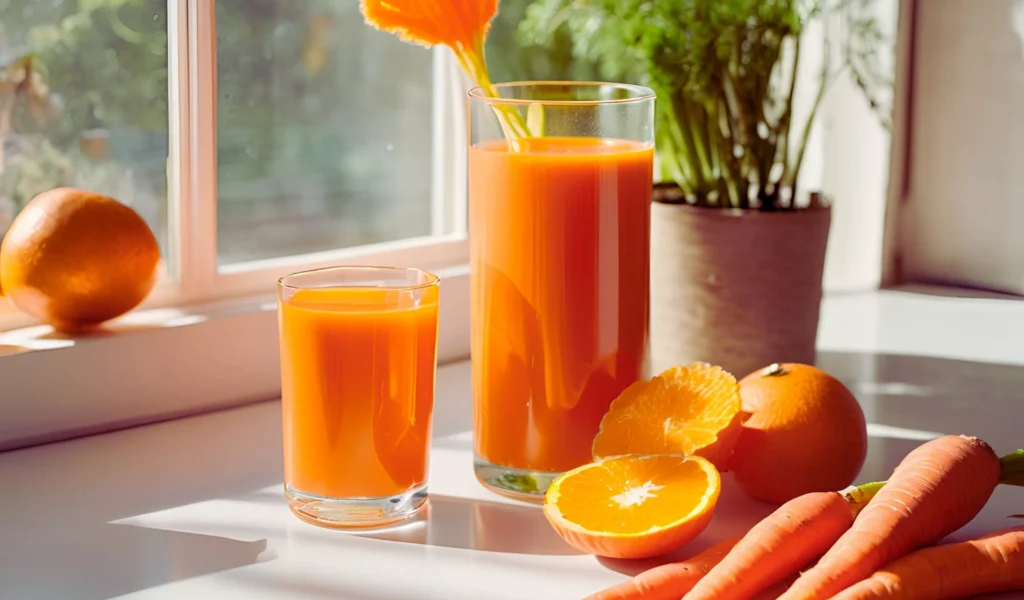
- 2 oranges
- 2 medium carrots
- 1 green apple
- 1 tsp turmeric
- 1-inch piece of ginger
Evening Juice:
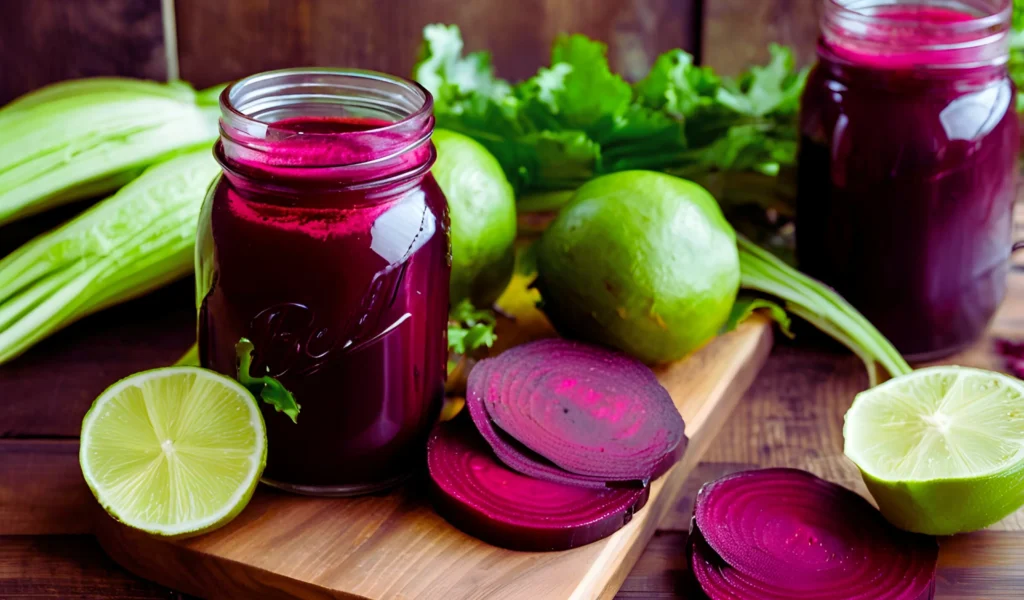
- 1 medium beetroot, peeled
- 2 celery stalks
- 1 green apple
- 1-inch piece of fresh ginger
- Juice of 1 lime
Step-by-Step Instructions
- Preparation: Thoroughly wash all fruits and vegetables. Peel those with thick skins, like oranges and beets, if desired.
- Juicing: Use a juicer for smooth, pulp-free juice. If using a blender, strain the juice through a fine mesh to remove the pulp.
- Storage Tips: Pour the juice into glass jars with airtight lids to preserve freshness. Refrigerate and consume within 24 hours.
Tips for Success
- Maximize Nutrient Retention: Drink the juice immediately after preparation to prevent nutrient loss from oxidation.
- Stay Hydrated: Along with the juice, drink plenty of water throughout the day to support detoxification
Part 6: Nutritional Content
Nutritional Breakdown (Per 100g)
| Nutrient | Morning Juice | Midday Juice | Evening Juice |
|---|---|---|---|
| Calories | 45 kcal | 55 kcal | 50 kcal |
| Carbohydrates | 10 g | 12 g | 11 g |
| Protein | 1 g | 1.2 g | 1 g |
| Fat | 0.1 g | 0.2 g | 0.1 g |
| Fiber | 1.5 g | 1.8 g | 1.6 g |
| Vitamin C | 12 mg | 18 mg | 10 mg |
Health Impact of Key Ingredients
- Kale and Spinach: Packed with iron, calcium, and antioxidants, these greens support bone health and immune function.
- Ginger: Known for its anti-inflammatory properties, ginger aids digestion and reduces nausea.
- Beetroot: High in nitrates, it promotes better blood flow and boosts stamina.
- Citrus Fruits: Loaded with vitamin C, they enhance immunity and protect against free radicals.
Part 7: During and After the Cleanse
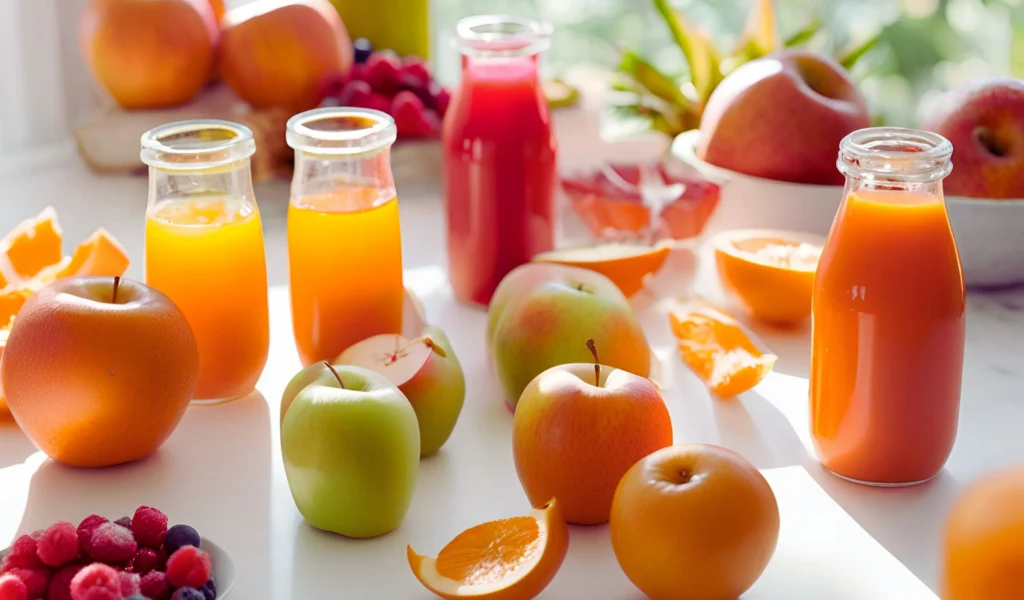
What to Expect During a Juice Cleanse
Embarking on a juice cleanse can bring a mix of experiences, such as:
- Day 1: Some fatigue or cravings as your body adjusts to the lack of solid food.
- Day 2-3: Increased energy, reduced bloating, and clearer skin as your body detoxes.
Tips for Managing Cravings or Hunger
- Drink herbal teas or warm water with lemon for a calming effect.
- Keep yourself busy to distract from hunger pangs.
- If needed, snack on a handful of raw nuts or a slice of cucumber.
Post-Cleanse Transition
The way you transition out of a cleanse is just as important as the cleanse itself:
- Start Slow: Begin with light, easy-to-digest meals like fruit or vegetable soup.
- Reintroduce Whole Foods Gradually: Add whole grains, lean proteins, and healthy fats over a few days.
- Avoid Processed Foods: Steer clear of sugary or greasy foods to maintain the benefits of your cleanse.
Part 8: Frequently Asked Questions (FAQs)
Can I exercise during a juice cleanse?
Yes, but stick to light activities like yoga or walking. Intense workouts may drain your energy due to the lower calorie intake.
How often can I do a juice cleanse?
For most people, a cleanse every 2–3 months is sufficient to reset the body and maintain balance.
Can I customize my juice cleanse recipe?
Absolutely! Feel free to adjust the ingredients to suit your taste preferences or specific health needs.
Are juice cleanses safe for everyone?
Not necessarily. Pregnant women, nursing mothers, or individuals with medical conditions should consult a healthcare professional first.
What’s the difference between using a juicer and a blender?
Juicers extract liquid and remove pulp, while blenders retain fiber, producing thicker drinks. Choose based on your nutritional goals.
Can I store juices for the next day?
Yes, but store them in airtight glass containers in the refrigerator to preserve freshness and nutrients for up to 24 hours.
Part 9: Conclusion – Embracing the Benefits of Juice Cleanse Recipesion
Juice cleanses have long been celebrated for their ability to detoxify the body, restore balance, and rejuvenate overall health. By incorporating nutrient-dense ingredients into simple yet flavorful drinks, these cleanses have become a go-to solution for those looking to reset their diet and embrace a healthier lifestyle. Furthermore, they offer a refreshing way to nourish the body while promoting digestion and hydration. In this guide, we’ll take a closer look at the holistic benefits of juice cleanses, explore how they fit into a balanced routine, and share practical tips to maintain your results long after the cleanse is over.
Why Juice Cleanses Matter
In today’s fast-paced world, it’s easy to fall into patterns of consuming processed foods, sugary snacks, and caffeinated beverages. Over time, this can lead to fatigue, digestive discomfort, and even nutrient deficiencies. A juice cleanse recipe offers a much-needed pause, allowing the body to reset while flooding it with essential vitamins, minerals, and antioxidants. Here’s why juice cleanses are so effective:
- A Digestive Reset:
Juice cleanses provide a break from heavy, solid foods, allowing the digestive system to rest. This can lead to improved gut health, reduced bloating, and better nutrient absorption. - A Burst of Nutrients:
With fresh fruits, vegetables, and superfoods, juice cleanse recipes offer an immediate boost of nutrients like vitamin C, potassium, and antioxidants, supporting immunity, skin health, and energy levels. - A Gateway to Healthy Habits:
For many, completing a juice cleanse marks the start of healthier eating patterns. It serves as a motivational boost to cut down on junk food and incorporate more plant-based meals.
Maintaining Balance Post-Cleanse
While juice cleanses are excellent for short-term detox, maintaining a balanced diet afterward is essential to prolong the benefits. Here are some strategies to keep your momentum going:
- Reintroduce Whole Foods Gradually:
After a juice cleanse, your digestive system will be sensitive. Start with easily digestible foods like steamed vegetables, broths, or soft fruits. Avoid heavy, greasy meals in the first 24–48 hours. - Focus on Plant-Based Eating:
Incorporate more salads, roasted vegetables, legumes, and whole grains into your daily meals. These foods not only complement the cleanse but also help maintain energy levels and prevent cravings. - Stay Hydrated:
Keep up the habit of drinking water throughout the day. Add lemon or cucumber slices for flavor and additional detox support. - Limit Processed Foods:
Avoid reverting to sugary snacks or processed meals, as these can undo the progress made during your cleanse. Stick to wholesome, unprocessed options. - Regular Mini-Detox Days:
Consider incorporating juice-based meals or snack days once a week to maintain the benefits without the need for a full cleanse.
Making Juice Cleanses a Part of Your Lifestyle
Juice cleanses don’t have to be a one-time event. When done correctly, they can seamlessly fit into your lifestyle. Here are ways to make juice cleanses sustainable:
- Customize Your Cleanse:
Personalize your juice recipes to better align with your specific health goals. For instance, adding ginger can aid digestion, while turmeric helps combat inflammation. Additionally, incorporating spinach provides a natural boost of iron, making your juice both nutritious and functional. By thoughtfully selecting your ingredients, you can create a custom blend that supports your well-being while keeping your drinks flavorful and refreshing. - Shorter Cleanses:
If multi-day cleanses feel overwhelming, stick to one-day or half-day cleanses. These shorter detox periods still deliver benefits without disrupting your routine. - Pair Juices with Light Meals:
If hunger becomes a challenge, pair your juices with a handful of nuts, a small salad, or a bowl of steamed veggies. This hybrid approach makes cleanses more manageable. - Listen to Your Body:
Pay attention to how your body responds to a cleanse. Adjust recipes, duration, or even frequency based on your energy levels, cravings, and overall well-being.
Juice Cleanse Recipes as a Wellness Tool
Juice cleanses aren’t just about weight loss or detoxing; rather, they’re a holistic way to reset both your body and mind. Beyond the physical benefits, the simple act of preparing fresh, colorful juices can be incredibly therapeutic. Moreover, many individuals report feeling more focused, energized, and even emotionally balanced after completing a cleanse. Ultimately, it’s an opportunity to reconnect with your health, cultivate mindfulness, and reinforce the importance of intentional eating.
Common Myths About Juice Cleanses
Let’s debunk some misconceptions about juice cleanses:
- “Juice cleanses are just about starving yourself.”
Not true! A properly designed juice cleanse recipe provides essential nutrients while allowing the digestive system to rest. - “Juices don’t provide enough energy.”
While they may not support high-intensity workouts, juices offer a steady source of natural sugars and nutrients to sustain daily activities. - “Juices can replace long-term balanced eating.”
Juices are a complement to a healthy lifestyle, not a substitute. Their benefits are best when combined with regular balanced meals.
Embracing the Power of Juices
Every sip of a fresh juice is a step toward better health. The vibrant colors, refreshing flavors, and nourishing properties of juice cleanse recipes make them a delightful addition to your diet. Whether it’s a one-day reset or a deeper cleanse, juices have the power to transform how you feel inside and out.
Final Thoughts: Why You Should Try a Juice Cleanse
If you’ve never tried a juice cleanse, now is the perfect time to take the leap. Not only is it an opportunity to hit the reset button, but it also allows you to nourish your body and embrace a healthier way of living. To get started, begin with a small cleanse, listen to your body’s signals, and enjoy the process. Moreover, with the right mindset and a well-crafted juice cleanse recipe, you’ll be amazed at the positive impact it can have on your overall well-being.
Cheers to a healthier, more vibrant you! 🥂
Print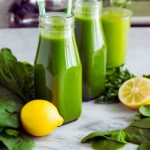
Juice Cleanse Recipe: A Complete Guide to Detox and Refresh Your Body
- Total Time: 15 minutes
- Yield: 3 servings 1x
- Diet: Vegan
Description
A juice cleanse recipe offers a refreshing and nutrient-packed way to detoxify your body, reset digestion, and boost energy levels. By replacing solid meals with nutrient-dense juices made from fresh fruits and vegetables, this cleanse helps support overall wellness while giving your digestive system a much-needed break. This recipe includes a balanced selection of juices throughout the day, designed to nourish and refresh you.
Ingredients
-
Morning Juice (Energizing Green Juice):
- 2 cups spinach
- 1 cup kale
- 1 green apple
- 1 cucumber
- Juice of 1 lemon
-
Midday Juice:
- 2 oranges
- 2 medium carrots
- 1 green apple
- 1 tsp turmeric
- 1-inch piece of ginger
-
Evening Juice:
- 1 medium beetroot, peeled
- 2 celery stalks
- 1 green apple
- 1-inch piece of fresh ginger
- Juice of 1 lime
Instructions
- Preparation: Thoroughly wash all fruits and vegetables. Peel fruits like oranges and beets if preferred.
- Juicing: Using a juicer, process the ingredients for each juice. If using a blender, strain the juice through a fine mesh strainer to remove the pulp.
- Storage: Store the juices in airtight glass containers in the refrigerator to preserve freshness. Consume within 24 hours for the best nutrient retention.
- Hydration: Drink plenty of water throughout the day to support detoxification.
Notes
Maximize nutrient retention by drinking the juices immediately after preparation. If you prefer a smoother texture, strain any pulp remaining from the juicer.
- Prep Time: 15 minutes
- Cook Time: 0 minutes
- Category: Drink
- Method: Juicing
- Cuisine: Health
Nutrition
- Serving Size: 1 juice serving
- Calories: 50 kcal
- Sugar: 12g
- Sodium: 10mg
- Fat: 0.2g
- Saturated Fat: 0g
- Unsaturated Fat: 0g
- Trans Fat: 0g
- Carbohydrates: 11g
- Fiber: 2g
- Protein: 1g
- Cholesterol: 0mg
Keywords: juice cleanse, detox juice, healthy juice, one-day cleanse

